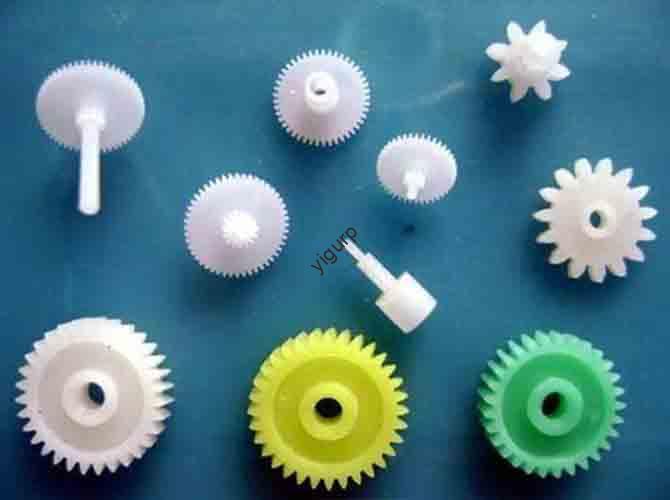In der heutigen schnelllebigen Fertigungswelt, businesses and engineers constantly seek technologies that cut costs, boost flexibility, and enable innovation. One solution that has risen to prominence? 3D additive printing (auch genannt 3D Druck or additive manufacturing, BIN). But what exactly is it, Wie funktioniert es, and can it solve your production challenges? Dieser Leitfaden bricht alles auf, was Sie wissen müssen.
1. What Is 3D Additive Printing? Definition & Kernprinzipien
Im Herzen, 3D additive printing is a digital manufacturing process that builds three-dimensional objects by adding material layer by layer—unlike traditional “subtractive” methods (Z.B., CNC -Bearbeitung) that carve or cut material from a solid block.
Key Principles of 3D Additive Printing
- Digitized Foundation: It starts with a 3D model created using CAD (Computergestütztes Design) or CAM (Computergestützte Fertigung) Software. This file acts as a “blueprint” for every layer.
- Schicht-für-Schicht-Konstruktion: The printer reads the CAD file, splits it into thousands of thin 2D layers, and deposits or fuses material (Z.B., Plastik, Metall, Harz) one layer at a time—stacking them vertically to form the final object.
- No Molds Required: Im Gegensatz zu Injektionsformungen oder Gießen, there’s no need for expensive, time-consuming molds—making it ideal for rapid prototyping and small-batch runs.
2. 3D Additive Printing Technologies: Typen & Ihre Anwendungen
Not all 3D printing technologies are the same. They vary by energy source, Material, and molding method. Below is a breakdown of the most common types and where they excel:
| Technologischer Name | Energy Source | Gemeinsame Materialien | Schlüsselanwendungen | Vorteile |
| Stereolithikromographie (SLA) | UV -Laser | Photopolymerharz | Prototypen, Zahnmodelle, Schmuck | Hohe Details (0.1mm accuracy), glatte Oberflächen |
| Selektives Laserschmelzen (Slm) | Fiber Laser | Metallpulver (Stahl, Aluminium) | Luft- und Raumfahrtteile, Medizinische Implantate | Stark, durable metal components |
| Elektronenstrahlschmelzen (EBM) | Electron Beam | Titan, cobalt-chrome | Orthopädische Implantate, Luft- und Raumfahrtstrukturen | High-temperature processing, minimaler Abfall |
Anwendungsfälle realer Welt
- Luft- und Raumfahrt: Boeing uses SLM to print lightweight turbine parts, reducing fuel consumption by 15%.
- Medizinisch: Hospitals create custom 3D-printed prosthetics (Z.B., hand implants) that fit patients perfectly—cutting wait times from months to weeks.
- Automobil: Tesla uses 3D printing to prototype battery housings, slashing development time by 40%.
3. Vorteile vs. Herausforderungen: Can 3D Additive Printing Solve Your Problems?
To decide if 3D additive printing is right for you, let’s weigh its strengths against its current limitations:
Vorteile (How It Solves Key Pain Points)
- Complexity Without Extra Cost: Print intricate designs (Z.B., Gitterstrukturen, interne Kanäle) that are impossible with subtractive methods—no additional labor or tools needed.
- Hohe Materialnutzung: Bis zu 95% of material is used (vs. 50-70% in der CNC-Bearbeitung), Verringerung von Abfällen und Senkung der Materialkosten.
- Personalization at Scale: Create custom products (Z.B., Personalisierte medizinische Geräte, branded promotional items) without slowing down production.
- Schnelles Prototyping: Turn a CAD design into a physical prototype in hours (keine Wochen), Beschleunigung der Produktentwicklungszyklen.
Herausforderungen (What to Consider)
- Druckgeschwindigkeit: Large or thick parts can take hours or days to print—still slower than mass-production methods like injection molding.
- Materielle Einschränkungen: Einige Materialien (Z.B., Hochtemperaturplastik, certain metals) are expensive or lack the strength needed for heavy-industry use.
- Cost-Benefit Balance: Für hochvolumige Produktion (10,000+ Einheiten), traditional methods are still cheaper. 3D printing shines most for small batches or prototypes.
4. Zukünftige Trends: Where Is 3D Additive Printing Headed?
Als technologische Fortschritte, these challenges are being addressed. Here’s what to expect in the next 3-5 Jahre:
- Faster Printing: Neue Technologien (Z.B., Bindemittel Jitting) are doubling print speeds, making 3D printing viable for more mid-volume applications.
- Wider Material Range: Companies are developing affordable, high-performance materials—including recycled plastics and bio-based resins.
- Finer Accuracy: Printers with 0.05mm resolution will become more accessible, opening doors for micro-manufacturing (Z.B., winzige medizinische Sensoren).
- Cross-Industry Expansion: Expect growth in fields like construction (3D-printed homes) and food (custom-shaped snacks or nutrient-specific meals).
5. Yigu Technology’s Perspective on 3D Additive Printing
Bei Yigu Technology, Wir sehen 3D additive printing Als Eckpfeiler der intelligenten Fertigung. It aligns with our mission to help clients reduce waste, speed up innovation, and adapt to changing market demands. We’ve supported aerospace and medical clients in adopting SLM and SLA technologies—for example, helping a dental lab cut prosthetic production time by 50%. While challenges like speed remain, we’re investing in software integrations (Z.B., CAD-to-printer workflow tools) to make 3D printing more efficient. For businesses ready to move beyond traditional manufacturing, 3D additive printing isn’t just a trend—it’s a strategic tool.
FAQ: Your Top 3D Additive Printing Questions Answered
- Q: Is 3D additive printing suitable for mass production?
A: Momentan, no—for batches of 10,000+ Einheiten, Traditionelle Methoden (Z.B., Injektionsformung) are cheaper and faster. But it’s ideal for small batches (1-1,000 Einheiten) and personalized products.
- Q: What materials can I use for 3D additive printing?
A: Common options include plastics (PLA, ABS), Metalle (Aluminium, Titan), Harze, and even specialty materials like carbon fiber or ceramic. The choice depends on your application (Z.B., Harz für Details, metal for strength).
- Q: How much does a 3D additive printer cost?
A: Entry-level desktop printers start at \(200-\)500 (für Bastler), while industrial-grade printers (Z.B., SLM für Metall) reichen von \(50,000 Zu \)1 Million. The cost also includes materials and software.
